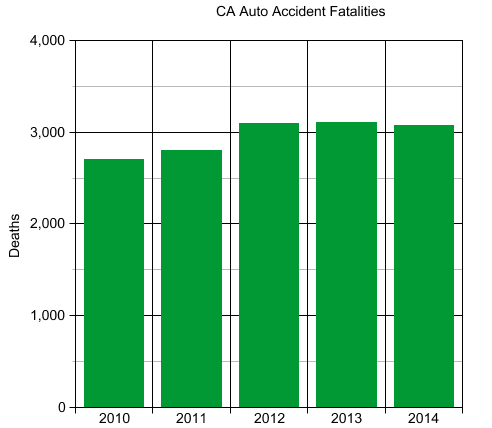

If we don’t win, you don’t pay.
NO WIN – NO FEE

ON CALL 24/7

U.S. Marine

US Traffic Accident Statistics
According to the National Highway Traffic Safety Administration (NHTSA), speeding is a factor in approximately 27% of all fatal traffic crashes in the United States as of 2022. Below, we will look at this and other statistics across agencies and time.

Crisis Brewing on America’s Roadways
Ultimate Guide to Understanding MVA Stats USA
Were you or a loved one fatally injured, or did you suffer permanent injuries when someone failed to drive safely?
Maybe the victim wasn’t wearing their seatbelt, and you think you have no case against the at-fault road user?
The National Highway Traffic Safety Administration (NHTSA) reported the highest number of traffic fatalities ever recorded since 2005, a serious crisis brewing on our roadways that can be preventable.
In this blog post, we will review some preliminary data reported concerning traffic accident statistics and this devastating trend with Ehline Law and our personal injury attorneys. Let’s start looking at car crash rates from highway statistics in the USA and rural areas!
Motor Vehicle Deaths Reaching 16-year High in the United States.
In May 2022, the NHTSA released early estimates of traffic fatality rates 2021 based on data from the US Department of Transportation’s Fatality Analysis Reporting System, showing an increasing trend since 202o.
Road accident fatalities increased from 38,824 in 2020 to 42,915 in 2021, a staggering 10.5% increase in crash death rates. These figures tend to show significant shifts in fatality rates across different categories.
The following are the traffic fatality rates in the USA in 2021 across different categories:
Roadway Function Class
- Rural interstate: 15% increase
- Urban interstate: 11% increase
- Rural arterial: 4% increase
- Urban arterial: 15% increase.
Age Group
- 16: 6% increase
- 16 – 24: 7% increase
- 25 – 34: 10% increase
- 35 – 44: 15% increase
- 45 – 54: 12% increase
- 55 – 64: 7% increase
- 65+: 14% increase.
Gender
- Male drivers: 10% increase
- Female drivers: 12% increase.
Single Vehicle Crashes vs. Multiple Vehicle Crashes Based on Estimated Overall Population
- Single vehicle: 6% increase
- Multi-vehicle: 16% increase.
One of the primary reasons believed to cause a 10.5% increase in traffic fatalities in 2021 is that more people and licensed drivers are on the road compared to 2020 when there were pandemic restrictions in the country. This number includes American teens and seat belt use numbers during road traffic. Crash deaths include all crashes involving motor vehicles (cars, trucks, SUVs), motorcycles, bicycles, and pedestrians.
A caveat about bicyclists: The NHTSA has proclaimed that approximately 42,915 people died in a motoring accident last year, a 10.5% increase from 2020. The deaths include pedestrians, cyclists, and others who may have been killed during a crash.
Fun Fact: Even when not mandated by law, wearing a helmet when riding is highly recommended as a safety measure. Since the 1970s, approximately 45,746 lives have been saved due to approved helmet-wearing. Wearing a helmet will help decrease death rates in most states, if not all, of the population.
The Insurance Institute for Highway Safety (IIHS) 2019 stated that pedestrian deaths contributed to 17% of all vehicle fatalities, a 51% increase since the updated 2009 pedestrian deaths tally. Not wearing a seatbelt takes these numbers into the stratosphere, making the total number flabbergasting regarding vehicle safety issues.
Motor Vehicle Crash Deaths Statistics by State (Vehicle Miles Traveled)
According to the IIHS, the top 10 states for the most car crash deaths per 100 million vehicle miles traveled in 2020 are as follows:
- South Carolina – 1.97
- Mississippi – 1.9
- Arkansas – 1.88
- Montana – 1.76
- Louisiana – 1.71
- Kentucky – 1.68
- New Mexico – 1.68
- West Virginia – 1.66
- Arizona – 1.6
- Florida – 1.6.
When analyzing the data prepared by IIHS, you notice that Southeastern and Western states top the chart for the highest number of fatal car crashes per 100 million vehicle miles traveled. These states are notorious for poor public transportation.
According to US News, West Virginia, Louisiana, and Mississippi have the worst transportation systems. Most of these states on the IIHS list above have poorly paved, winding, dark rural roads that increase the risk of accidents for drivers.
Many Northeastern states, like New Jersey and Massachusetts, are at the bottom of the IIHS list because of their excellent public transportation infrastructure.
Leading Causes of Motor Vehicle Crashes
Here are some of the leading causes of fatal crashes in the United States:
- Drunk driving: According to the New York state police, drunk driving causes approximately 17,000 alcohol-impaired driving fatalities nationwide and contributes to more than 30% of all fatal traffic collisions in New York. A study by NHTSA found that 16% of all weekend nighttime drivers tested positive for illegal drugs.
- Not wearing a seat belt: IIHS revealed that 56% of drivers and 59% of passengers in accidents involving fatal injuries in passenger cars were not wearing seat belts.
- Speeding: According to the Bureau of Transportation Statistics, speeding was the number one factor in deadly highway crashes in 2017. The IIHS reported that 29% of all fatal motor vehicle accidents in 2020 involved speeding, and more than 50% of all fatal car crashes happened on roads with a 55 mph speed limit.
- Distracted driving: 6% of fatal motor vehicle traffic crashes involved distracted driving, with 64% daydreaming and 12% of drivers on their phones before the accident.
- Drowsy driving: The NHTSA 2020 reported 633 fatal crashes, about 2% of total fatal traffic crashes, resulting from drowsy driving.
How Alcohol Impacts Driver Behavior
Drivers are more likely to drive dangerously under specific circumstances like drinking. Alcohol impairs a person’s judgment and reduces risk tolerance, affecting their behavior. A person under the influence of alcohol might consider it safe to get behind the wheel.
- In a research paper published in 2020 in the Transportation Research Part F: Traffic Psychology and Behavior journal, the study investigated the impact of a 0.5% blood alcohol concentration (BAC) on how drivers control and maneuver their vehicles across 30 independent participants. The percent-wise research revealed that alcohol harmed a driver’s behavior.
Consumption of alcohol affected driving, resulting in more speed variation and the inability to move in a straight line. Participants also had a much smaller distance between cars during overtaking maneuvers. Interestingly, participants had a much higher reaction time towards traffic lights but not vehicles merging into traffic.
Many studies and statistics from official sources confirm the adverse effects of alcohol intake on a driver’s behavior.
- The Traffic Injury Research Foundation (TIRF) conducted a poll last year, which found that 22.5% of the respondents drove when they believed they were over the BAC limit, a 5.9% since 2020.
Here are some reasons why these respondents drove while drunk:
- 40.5% of those respondents believed that they were okay to drive
- 12.4% were confident that they could move their passenger vehicle carefully while drunk
- 10.4% of respondents thought they wouldn’t get caught
- 7.4% stated that they had no alternative travel arrangements
- 4.1% said that they were driving to a nearby location.
.The 40.5% of the people who believed they were okay to drive do not understand the impairing effects of alcohol on a driver. Such statistics continue to support the need to educate citizens and create awareness of how alcohol impairs a driver’s judgment.
Who Is More Vulnerable to Getting into Fatal Traffic Accidents?
According to the Centers for Disease Control and Prevention (CDC), traffic collisions were the leading cause of death in the United States for people aged 1 to 54 in 2019. However, certain groups are more vulnerable to fatal motor vehicle traffic crashes than others.
Teen drivers are among the most vulnerable groups of people getting involved in fatal traffic accidents. According to the Federal Highway Administration, teens aged 15 to 20 account for 4% of road drivers but contribute 7.8% of all deadly crashes. Teen drivers have less road driving experience and tend to overestimate their driving capabilities, resulting in severe accidents and traffic deaths.
The IIHS reports a three times higher fatal crash rate per mile driven for teen drivers than for drivers aged 20 or over.
Let’s go over some disturbing US traffic accident statistics for teen drivers reported by the IIHS:
- The crash rate for teen drivers is four times more than that of other age group drivers.
- During the summer break (May, June, and July), more vehicle accidents occur, resulting in the highest traffic deaths among teen drivers.
- In 2019, 66% of the crash fatalities among teen drivers were male passenger vehicle drivers.
- 57% of teenage car fatalities occurred in passenger vehicles driven by other teens.
According to the CDC, some common causes of teen driver crash fatalities are distracted driving, texting and driving, drunk driving, lack of experience, not wearing seatbelts, and nighttime driving.
Driving while operating a cell phone decreases the brain activity connected with driving a motor vehicle by around 37%. Additionally, sending or receiving text messages can remove a driver’s eyes off the road for around 4.6 seconds. This is around the same length as an entire football field when you consider the time your eyes are removed from the roadway. Information Source: http://www.cdc.gov/Features/dsDistractedDriving/ http://www.distraction.gov/ http://www.ftpersonalinjurylawyers.com/blog/car-accident-statistics http://www.cdc.gov/motorvehiclesafety/seatbeltbrief/index.html https://www.driverknowledge.com/driving-tests/ https://www.driverknowledge
The Impact of Car Accidents on the US Economy
When we think about road accidents, most think of the two impacts they can have on the passengers or drivers involved: injuries or death. However, they fail to assess the effects of these accidents on the US economy.
The NHTSA 2010 report on “The Economic and Societal Impact of Motor Vehicle Crashes” states that vehicle accidents resulted in $242 billion in total economic costs.
Some of the 2010 economic cost figures include:
- Lost workplace productivity – $57.6 billion
- Lost household productivity – $19.7 billion
- Property damage – $76.1 billion
- Medical costs – $23.4 billion
- Congestion costs – $28 billion.
In 2020, the National Safety Council (NSC) reported that car accidents cost the US economy $474 billion, a 96% increase from 2010.
Car accident survivors can develop post-traumatic stress disorder or other mental problems. The 2016 National Center for Biotechnology Information study on the “psychological impact of injuries sustained in motor vehicle accidents” revealed that 50% of car crash survivors experience anxiety and phobia of driving—other numbers from other states back this.
Although auto manufacturers are making vehicles safer by incorporating the latest safety features in newly manufactured cars, the country’s crash deaths have reached an all-time high. US Transportation Secretary Pete Buttigieg believes that the situation is much more complex.
There is a culture around cars in America, with the highest number of people buying bigger and faster cars, creating a crisis on our roadways. However, with the fatality rate climbing quicker, turning it back around isn’t an easy problem to fix.
Many advocates believe the NHTSA is slow to adopt new guidelines or laws. At the same time, consumers want more significant and faster cars, potentially posing a severe risk to pedestrians, motorcyclists, and cyclists riding peddle-powered vehicles struck by older vehicles.
What About L.A. Rush Hour Traffic Congestion?
Weekday rush-hour traffic is the most congested time in L.A., and as a result, the most significant wrecks occur during this time.
- Many of these wrecks occur on the I-5, I-10, I-105, and I-405 freeways.
Driver Error Statistics Are Alarming
- At least 93% of vehicle collisions are due to driver error compared to roadway faults.
It doesn’t help that distracted drivers, along with rising traffic in L.A., see more vehicles on the road yearly. According to LADOT Plus, car sales and registrations are rising throughout the Golden State.
A few reasons for increased auto sales are low gas prices, cheaper cars, and a prosperous economy.
Most of all, vehicle operators are becoming increasingly distracted. Some of this is due to newly minted teens, but even adults are not safe regarding onboard technology like GPS, XMS-type satellite radios, smartphones, and video conferencing apps like Skype.
What Are Some Grim Facts About Los Angeles Traffic Congestion?
- Los Angeles County statistics show at least 5.8 million registered motor vehicles exist.
- Only a few states have more registered motor vehicles than L.A. County.
- At least 7.5 million vehicles go back and forth in Los Angeles.
- In one year, L.A. drivers reach a little over 92 million miles.
- There are thousands of miles of poorly maintained roadways in the county.
- The California Department of Transportation says L.A. contains 527 miles of freeways, and 382 of those miles need service and maintenance.

California Auto Accident Fatalities Statistical Chart.
Our accident attorneys have studied the rate of deaths from wrecks with focus. We have also worked with law enforcement and families of decedents. Many times, we use statistics like these to help jurors and adjusters.
Sadly, Los Angeles is one of the most dangerous cities for drivers and riders. California also has more registered motorcycles than any other state in the US. Plus, it is unsafe for pedestrians here compared to the rest of the US. For example, people on foot make up around one-third of all traffic fatalities.
It is common to be injured when hit from the rear while stopped at a red light. The Los Angeles County stretch of the I-5 and I-405 South Freeways is world-famous for sensational accidents.
WHAT ARE THE UNITED STATES TRAFFIC ACCIDENT NUMBERS?
- Fatal harm in the US in 1990 was 2.1 deaths per million.
- Recently, this decreased to 1.1 deaths per million in 2009.
- Motor vehicle crashes cost $260.6 billion per year, approx—$ 820 per person.
- Motor vehicle crashes cause 2.35 million injuries and ailments each year.
- In 2012, fatal crashes nationwide reached an average of 92 deaths per day. That’s an accident every 16 minutes.
- In 2012, the total number of deaths was over 33,000.
- Over of children under 15 die each year in auto collisions is over 1,600.
- The leading cause of death in ages 8 to 34 is auto collisions.
What Are Some Other Interesting Vehicle Accident Statistics?
- Teen Distracted Driving Statistics
- Head-On Collision Statistics
- DUI Distracted Driving Statistics
- Rainy Weather Accidents
- Sideswipe and Lane Change Statistics
- Bicycle Accident Statistics
- Motorcycle Accident Statistics
- Bus Accidents Statistics
- Worst Train Accidents
- Car Accident Fatality Statistics
- Crane Accidents
Schedule a Free Consultation with Ehline Law to Learn More About US Traffic Deaths, Statistics, and Analysis
The United States spends billions on emergency services, medical care, rehabilitation, property losses, and lawsuits. The NSC urges President Joe Biden to show total commitment to zero occupants killed in crashes involving roadway deaths per capita by 2050.
The Biden administration is taking critical steps to reverse the fatality trend, including the President’s Bipartisan Infrastructure Law. It includes $6 billion towards the Safe Streets and Roads for All program, which funds local efforts to reduce the higher number of fatal road accidents. They claim this is their recent focus in addition to the other problems Americans face at home and abroad.
However, it will take time to bring the much-needed change. Fortunately, negligence laws allow injured victims to recover compensation for the legal limit of damages incurred after an accident. If you’re suffering from injuries due to an accident that was not your fault, do the responsible thing. Contact us at (833) LETS-SUE for a free consultation about your case.
Citations:
- National Center for Statistics and Analysis, personal communication, Oct. 16, 2018, Nov. 6, 2019, Jan. 6, 2021, and Mar. 4, 2022.
- Vehicle-miles: 1960-65: US Department of Transportation, Federal Highway Administration, Highway Statistics Summary to 1995, FHWA-PL-97-009 (Washington, DC: July 1997).
-
Accordion - FAQs
Accordion - FAQs
- Can I Get More Money for Personal Injury With a Lawyer
- What Is A Personal Injury Lawsuit?
- What is The Civil Discovery Process?
- Bicycle Accident FAQs
- Minor’s Compromise FAQs
- What Should I Do If I’m Hurt Visiting or Vacationing in California?
- How Do I Enforce My Personal Injury Judgment?
- Are Fishing Expeditions Allowed At Depositions?
- Will My Legal Status Affect my Lawsuit?
- Pure Comparative Negligence Explained
- Determining Case Value
- How Do I Get A Rental Car After My Car Accident?
- How Much Money Do Personal Injury Lawyers Make?
- Los Angeles Car Accident Statistics | Safety, Tips and Data
California injury law firm has Northern, Southern, and Central California locations.

